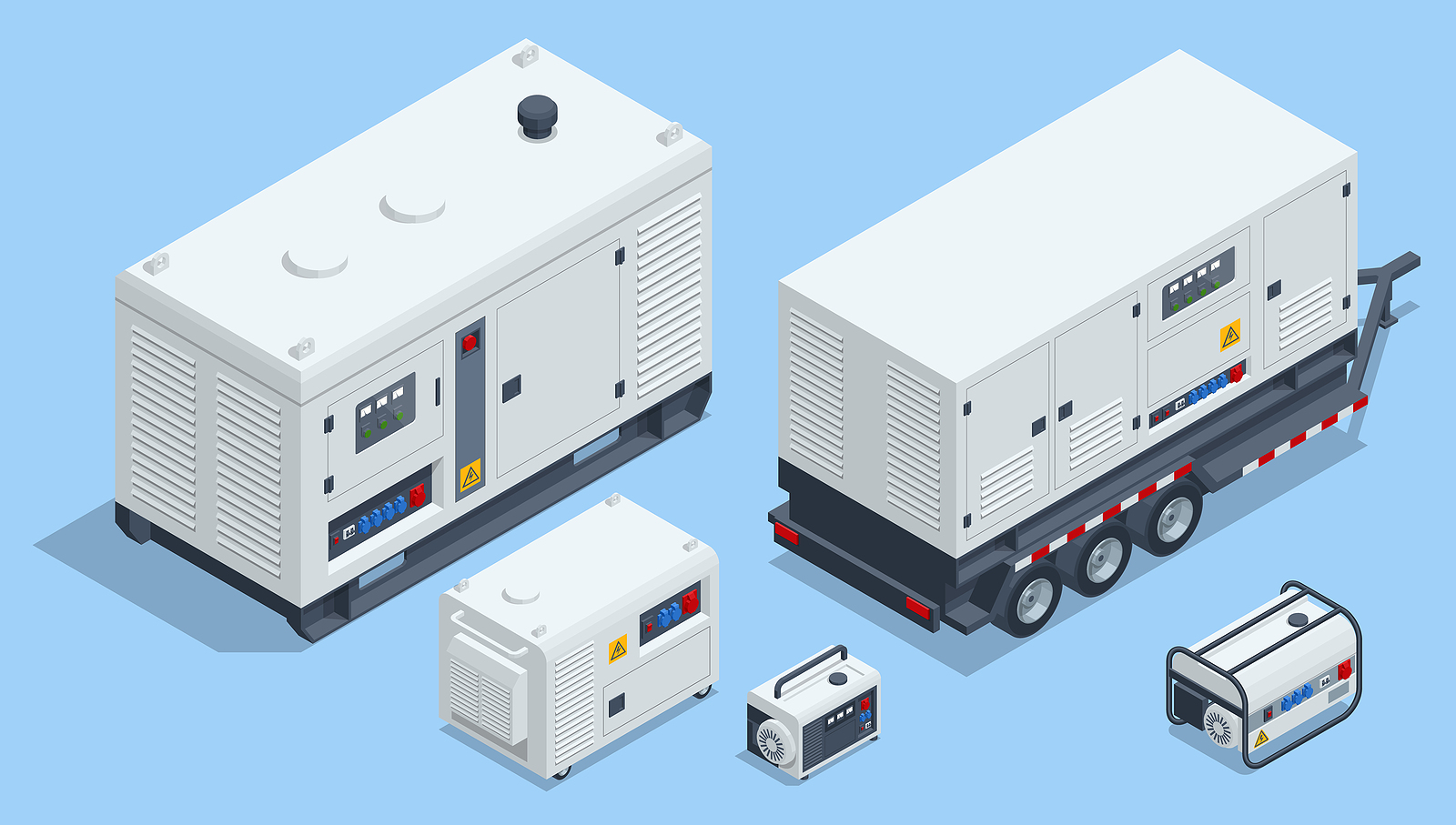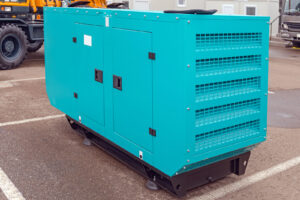
Types of Surgery Centers
In recent years, I've noticed a significant transformation in the healthcare landscape, particularly in the way we deliver care. There's a noticeable shift from traditional inpatient settings to more convenient outpatient care. What's fascinating is how this change has given rise to a multitude of surgery centers, each with its own distinct emergency power requirements. I'd like to delve into this topic and explore the various types of surgery centers and the specific emergency power needs they have.
The Shift from Inpatient to Outpatient Care
Historically, surgical procedures necessitated hospitalization with prolonged stays for post-operative recovery. Nevertheless, the healthcare landscape has undergone a remarkable transformation, driven by innovative medical technologies and evolving healthcare practices, resulting in a substantial shift from inpatient to outpatient care.
Outpatient surgery, often referred to as same-day surgery or ambulatory surgery centers, represents a pivotal development in healthcare delivery. This model enables patients to undergo surgical procedures and return home on the very same day, without the need for extended hospitalization. This shift has brought about a multitude of advantages, ushering in a new era in healthcare:
- Cost-Efficiency: Outpatient care offers a cost-effective alternative to traditional inpatient settings. Patients can avoid the substantial expenses associated with extended hospital stays, leading to significant cost savings for both individuals and healthcare systems. This cost-efficiency makes healthcare more accessible and sustainable.
- Enhanced Convenience: The appeal of outpatient care lies in its convenience. Patients can return home shortly after a procedure, minimizing disruptions to their daily routines and allowing for a more comfortable recovery in familiar surroundings. This convenience not only benefits patients but also eases the burden on their families.
- Decreased Infection Risk: Hospitals are notorious for being breeding grounds for infections. In contrast, outpatient surgery centers have streamlined processes and reduced exposure to hospital-acquired pathogens, significantly lowering the risk of infections for patients. This not only improves patient safety but also reduces the strain on healthcare facilities in dealing with preventable infections.
- Faster Recovery Times: Outpatient surgery offers faster recovery times, alleviating physical and emotional stress on patients. This expedited healing process enables individuals to return to their regular activities sooner, enhancing their overall quality of life and productivity.
- Optimized Resource Allocation: The strategic shift of select surgical procedures to outpatient settings optimizes the allocation of hospital resources. By freeing up inpatient beds, healthcare facilities can better accommodate patients with more complex medical needs. This ensures that critical resources are available for those who require intensive care while maintaining efficient outpatient services.
- Patient-Centered Care: The transition to outpatient care aligns with the broader trend in healthcare toward patient-centered care. This approach emphasizes individualized, efficient, and accessible medical services. Patients are empowered to make informed decisions about their care, and healthcare providers focus on meeting their unique needs, resulting in a more personalized and satisfying healthcare experience.
Different Types of Surgery Centers

The healthcare landscape has evolved to meet the increasing demand for outpatient services, giving rise to a diverse array of specialized surgery centers. These centers are dedicated to delivering targeted and personalized care, tailored to the specific needs of patients. By providing a setting optimized for various medical conditions, they ensure individuals receive the highest quality treatment and attention.
Hospital Outpatient Surgery Departments
These units, located within hospitals, focus on performing outpatient surgeries. With access to the extensive resources of the hospital, including a large pool of medical professionals and advanced medical technology, they can handle a wide spectrum of surgical procedures. From minor surgeries to complex operations, patients can expect comprehensive care in a hospital outpatient setting.
Ambulatory Surgery Centers (ASCs)
ASCs are stand-alone facilities specializing in outpatient surgeries. They are renowned for offering same-day surgical care, encompassing diagnostic and preventive procedures. ASCs often provide a cost-effective alternative to hospital outpatient departments, making high-quality healthcare more accessible to a broader range of patients.
Physician’s Office-Based Surgery Centers
These centers, typically located within a physician's office, are designed for minor surgical procedures. Patients benefit from the convenience of receiving consultation, surgery, and follow-up care all in one location. This streamlined approach enhances the patient experience, particularly for those requiring minor surgical interventions.
Comparing Emergency Power Needs
Emergency power requirements in surgery centers vary significantly depending on factors such as the complexity of procedures performed, the types of medical equipment utilized, and the facility's size. To ensure a comprehensive understanding, let's delve deeper into the distinct power needs of each type of surgery center:
- Hospital Outpatient Surgery Departments: Hospital outpatient surgery departments, which are integral parts of larger healthcare institutions, have some of the most substantial emergency power needs. Given their critical role in healthcare delivery, these departments necessitate robust backup power systems. These systems must be capable of sustaining all essential functions during power outages. This includes powering operating rooms, post-surgery recovery areas, as well as vital systems such as lighting, ventilation, and a wide range of medical equipment.
- Ambulatory Surgery Centers (ASCs): Ambulatory Surgery Centers (ASCs) also have significant emergency power requirements, albeit potentially less than those of full-fledged hospitals. ASCs typically require backup power to support surgical and life-supporting equipment, ensuring uninterrupted surgical procedures. Moreover, maintaining critical lighting and climate control systems is imperative to uphold patient safety and comfort. Certain ASCs may have additional power needs for specialized surgeries that rely on energy-intensive equipment.
- Physician’s Office-Based Surgery Centers: Physician's office-based surgery centers generally have the lowest emergency power demands among the three types. Their basic power needs typically encompass backup support for surgical equipment, essential lighting, and fundamental life-support devices. However, it's crucial to note that as the complexity of procedures performed in these centers increases, their emergency power requirements may also rise. Surgeons may require additional support for advanced surgical tools and equipment in such cases.
The Importance of Emergency Power Systems in Surgery Centers

Emergency power systems play a critical role in the smooth and safe operation of surgery centers. They serve as the backbone that ensures essential services continue to function seamlessly even in the face of power disruptions, a scenario that could potentially jeopardize patient well-being.
Within the realm of surgery centers, the importance of a well-designed emergency power system cannot be overstated. Such a system must be capable of delivering uninterrupted power to a range of vital equipment, including surgical lights, patient monitors, ventilators, and various life-supporting devices. Furthermore, it should extend its support to critical infrastructure components, such as heating, ventilation, and air conditioning (HVAC) systems, which are pivotal in maintaining the sterility of the surgical environment.
It's worth noting that the size and complexity of the emergency power system required vary according to the specific nature of the surgery center. While a large hospital outpatient department or an ambulatory surgery center (ASC) might necessitate a comprehensive multi-generator system, a smaller physician's office-based surgery center may suffice with a more compact and straightforward setup.
Key Considerations for Determining Emergency Power Requirements
When assessing the emergency power needs of a surgery center, it is essential to take into account various critical factors to ensure the safety and functionality of the facility during power outages. These considerations include:
- Scale of Operations: The size and scale of the surgery center are fundamental factors. Larger facilities, such as hospital outpatient departments and Ambulatory Surgery Centers (ASCs), typically require more comprehensive emergency power systems. This is because they offer a broader range of services and house a greater variety of medical equipment, all of which must remain operational during emergencies.
- Types of Surgeries Performed: The types of surgical procedures performed within the center significantly influence power requirements. Complex surgeries involving advanced medical equipment, extensive lighting systems, and life-support systems demand a more substantial power supply to ensure uninterrupted operation. Understanding the specific power needs for different surgical specialties is crucial.
- Regulatory Compliance: Compliance with local and national regulations governing emergency power systems in healthcare facilities is of utmost importance. Each jurisdiction may have its own set of rules and guidelines. Surgery centers must ensure that their emergency power systems align with these regulations to guarantee both patient safety and legal compliance. Non-compliance can lead to serious consequences, including legal penalties.
- Reliability and Redundancy: The reliability of the emergency power system is critical to maintaining patient safety. It is essential to design a system that incorporates redundancy, ensuring uninterrupted power supply even if one component fails. This redundancy minimizes the risk of disruptions during critical surgical procedures and helps prevent life-threatening situations.
- Maintenance and Testing: Regular maintenance and rigorous testing protocols are indispensable for emergency power systems. Scheduled maintenance checks and servicing are vital to maintaining peak performance. Rigorous testing ensures that the system functions as expected during real-life power outage scenarios. By conducting routine assessments and addressing any issues promptly, healthcare providers can have confidence in the reliability of their emergency power system.
Frequently Asked Questions (FAQs) About Surgery Centers
Q1: What is the main difference between inpatient and outpatient care in the context of surgery centers?
A1: Inpatient care involves hospitalization with extended stays for post-operative recovery, while outpatient care, often referred to as same-day surgery or ambulatory surgery, allows patients to undergo surgical procedures and return home on the same day, without the need for prolonged hospitalization. This difference in care settings impacts patient experience and the resources required.
Q2: Why are outpatient surgery centers becoming more popular?
A2: Outpatient surgery centers have gained popularity due to a range of advantages they offer, including cost-efficiency, enhanced convenience, decreased infection risk, faster recovery times, optimized resource allocation, and patient-centered care. These benefits make them a preferred choice for many patients and healthcare systems, contributing to their increasing popularity.
Q3: What are the different types of surgery centers?
A3: There are three main types of surgery centers:
- Hospital Outpatient Surgery Departments: These are typically located within hospitals and handle a wide range of surgical procedures.
- Ambulatory Surgery Centers (ASCs): ASCs are standalone facilities specializing in outpatient surgery, known for their efficiency and focus on same-day procedures.
- Physician’s Office-Based Surgery Centers: These smaller facilities are located within physician offices and cater to more minor surgical interventions.
Q4: What are the emergency power needs of Hospital Outpatient Surgery Departments?
A4: Hospital outpatient surgery departments require robust backup power systems to sustain essential functions during power outages. This includes powering operating rooms, post-surgery recovery areas, lighting, ventilation, and various medical equipment, ensuring the continuity of patient care.
Q5: How do Ambulatory Surgery Centers (ASCs) differ in terms of emergency power requirements?
A5: ASCs also have significant emergency power needs, primarily to support surgical and life-supporting equipment, maintain critical lighting and climate control systems, and potentially power energy-intensive equipment for specialized surgeries. Their self-sufficiency and independence from hospitals necessitate reliable power systems.
Q6: What are the emergency power needs of Physician’s Office-Based Surgery Centers?
A6: Physician's office-based surgery centers generally have lower emergency power demands compared to larger facilities. Their basic power needs typically encompass backup support for surgical equipment, essential lighting, and fundamental life-support devices, ensuring patient safety during unplanned power disruptions.
Q7: Why is emergency power crucial in surgery centers?
A7: Emergency power systems are essential to ensure the safety and functionality of surgery centers during power outages. They power critical equipment, including surgical lights, patient monitors, and life-support devices, and maintain a sterile and safe surgical environment, preventing disruptions in patient care.
Q8: What should surgery centers consider when determining their emergency power requirements?
A8: Key considerations include the scale of operations, types of surgeries performed, regulatory compliance, reliability and redundancy of the power system, and regular maintenance and testing to ensure the system's functionality. A thorough assessment is essential to meet the unique needs of each surgery center.
Q9: How are future trends in technology and healthcare affecting emergency power needs in surgery centers?
A9: Advancements in surgical technology, patient monitoring systems, and the shift towards more complex outpatient procedures are driving the need for more robust and extensive emergency power systems in surgery centers. Staying up-to-date with technological advancements is crucial to meet evolving healthcare demands.
Q10: How can surgery centers prepare for evolving emergency power needs in the healthcare landscape?
A10: Surgery centers should proactively assess their power infrastructure, identify potential vulnerabilities, calculate power load requirements, and make necessary upgrades to ensure they can continue to deliver safe and high-quality healthcare services in the face of power outages or emergencies. Adaptability and foresight are key to maintaining patient safety and operational efficiency. Regularly reviewing and updating emergency power plans is essential in a dynamic healthcare environment.
Future Trends in Emergency Power Needs
In the realm of healthcare, the trajectory of technological progress is poised to usher in significant changes in the demand for emergency power. As surgical technology becomes increasingly sophisticated, surgery centers will undoubtedly find themselves in need of more robust and extensive power solutions. This evolution is driven by the growing demand for advanced surgical equipment, which not only requires more power but also demands a higher level of reliability.
One notable aspect of this transformation is the parallel advancement in patient monitoring and data systems. These systems are becoming integral to modern healthcare practices, offering real-time data analysis and remote monitoring capabilities. To ensure uninterrupted patient care and data integrity, surgery centers must invest in backup power systems that are both robust and reliable.
In addition to the technological advancements, the shift towards outpatient care is another pivotal factor influencing emergency power needs. Ambulatory Surgery Centers (ASCs) and physician's office-based surgery centers are expected to handle more complex procedures in the near future. These intricate surgeries will necessitate more extensive emergency power systems to ensure the safety and well-being of patients during critical moments.
Given these future trends, it is imperative for surgery centers to proactively plan for their evolving emergency power requirements. Regularly assessing and reviewing their power infrastructure will be essential. This includes identifying potential vulnerabilities, calculating power load requirements, and making necessary upgrades. By doing so, surgery centers can guarantee that they will continue to deliver safe, high-quality healthcare services, even in the face of power outages or unforeseen emergencies. Adaptability and foresight are key as healthcare institutions prepare for the challenges of tomorrow's advanced medical landscape.
Surgery Centers Conclusion
In my personal reflection on the evolution of healthcare and the emergence of specialized surgery centers, I'm struck by the resilience and dedication of the healthcare industry. The transition from inpatient to outpatient care has opened new doors for patient-centric, cost-effective, and convenient healthcare delivery. However, it's crucial to recognize the often-overlooked hero behind the scenes: the emergency power system.
As we look ahead, these surgery centers face exciting challenges and opportunities, driven by advancements in medical technology and a continued emphasis on outpatient care. In my perspective, the commitment to patient safety and well-being, even during power disruptions, exemplifies the unwavering dedication of healthcare providers. To ensure that these centers remain at the forefront of healthcare delivery, they must adapt, remain proactive, and be prepared to meet the evolving emergency power needs of tomorrow's advanced medical landscape.
Sources
- https://www.sciencedirect.com/topics/engineering/emergency-power
- https://journals.sagepub.com/doi/full/10.1177/01445987211036824k
- https://www.brennancenter.org/our-work/research-reports/guide-emergency-powers-and-their-use
continue reading
